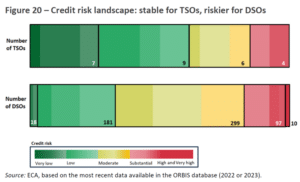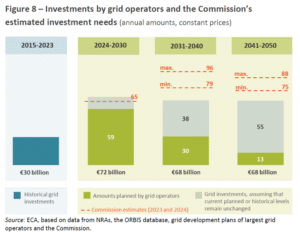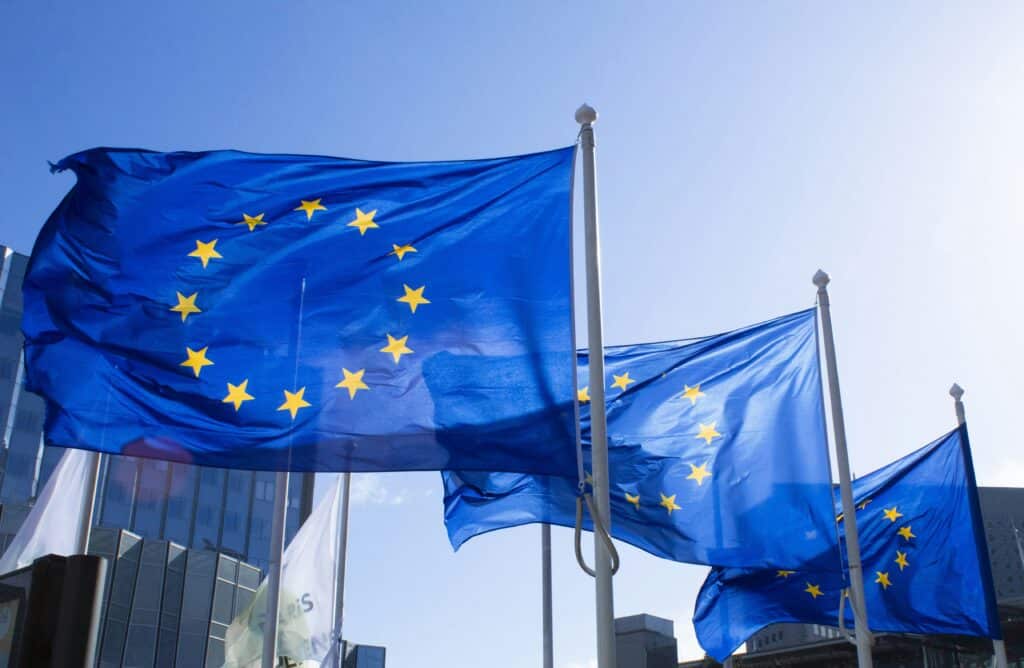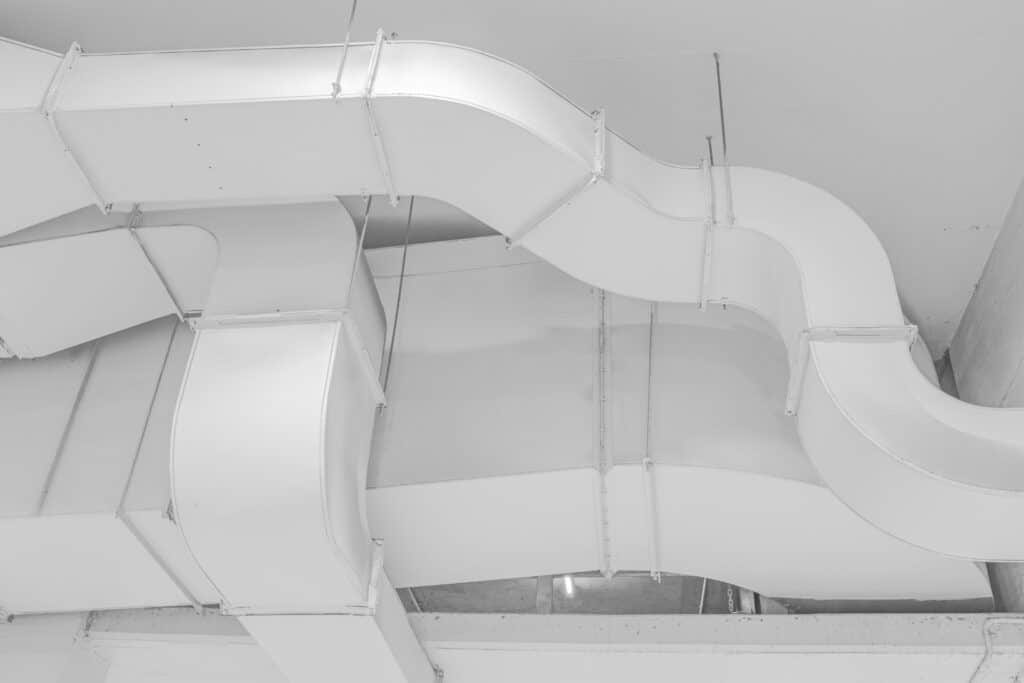Grids and competitiveness: a briefing for EU institutions
This is the fourth installment of the Topic of the Month on the European Grids Package
At the “one year after Draghi” conference on 16 September 2025, the European Commission President von der Leyen and Professor Draghi gave their view on where we stand in Europe. They both argue for more integration in domains where this would improve our competitiveness, like energy.
On different occasions, they have quoted the IMF estimates that Europe’s internal barriers are equivalent to a 45% tariff on manufactured goods and a 110% levy on services. Draghi added in the media that Europe is sabotaging its own economy far more than US tariffs can.
It is in this context that we are expecting the EU Grids Package. For electricity infrastructure, we have a target to reach a level of interconnection of 15% for 2030. In 2025, 8 Member States still did not reach the 2020 target of 10%, only 2 of them are islands[1]. The Parliament is calling for a binding target by 2036.[2]
As discussed in the earlier blog posts of this topic of the month by FSR colleagues Catharina Sikow Magny (look here) and Alberto Pototschnig (look here), we published several ideas feeding into this process. This blog post includes a teaser of the technical briefing we prepared to discuss with the European Parliament on 22 September and with the Council on 29 September. We went there together with experts from ACER.
In the briefings, we discussed what drives investments in grids, and why most are worried about not having enough investments. There are many challenges from supply chains to pressures to keep network tariffs low, different national interests, long permitting procedures, and protection against disruptions. Too many challenges to treat comprehensively in this short blog.
We therefore limit ourselves to sharing two interesting graphs from a recent report published by the European Court of Auditors[3]. According to the estimates by the European Commission, to align with the EU energy and climate ambitions, the annual investments in grids are expected to increase from 30B to 65B euros in the years leading to 2030, to 79-96B euros in the decade up to 2040, and 75-88B euros in the decade up 2050. As the grey area indicates in the graph, which is reported below, only a part of those investments is planned because Transmission System Operators (TSOs) and Distribution System Operators (DSOs) have shorter planning horizons, while some do include an outlook that reaches until 2050.
The plans are not yet fully aligned with the ambition to reach net zero, and it will be difficult to stick to the plans in the current setup. The European Court of Auditors refers to the credit risk landscape of TSOs as “stable”, while DSOs are labelled “riskier”. Addressing credit risk is important if we want to keep the investment costs under control. Reducing risk can be done by changing the regulatory framework, improving the debt/equity ratio, and there are also talks about providing financial guarantees.
Another challenging topic is how to allocate the costs among current and future grid users. Grid investments are needed to accommodate more renewable energy sources into the system, and to enable electrification of heating, transport, and industry. We need more coordination between electrification and grid development, and more cooperation among countries. For more than a decade we have been trying to apply the “beneficiary pays principle” across borders with limited success. Other solutions like binding EU interconnection targets, an EU network tariff component, and more EU funding or financial guarantees for grids are coming back in the discussions.


[1] https://energy.ec.europa.eu/topics/infrastructure/electricity-interconnection-targets_en
[2] MEPs push for more coordination and resilience in European electricity grids | News | European Parliament
[3] European Court of Auditors, review 01/2025: “Making the EU electricity grid fit for net-zero emissions”, Publications Office of the European Union, 2025. https://www.eca.europa.eu/en/publications/RV-2025-01






